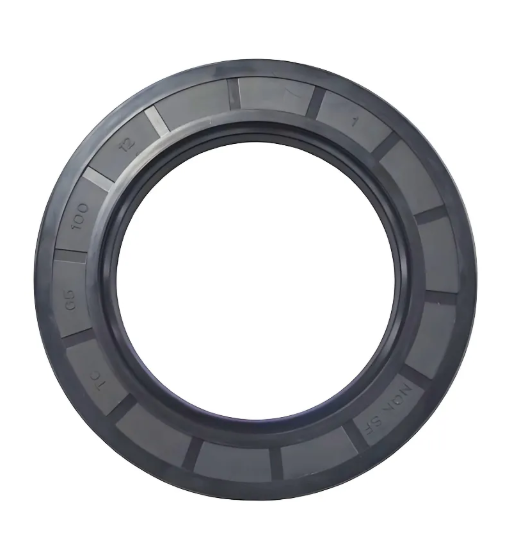Factors Influencing Oil Seal Lifespan
Oil seal lifespan is influenced by various factors including material quality, operating conditions, maintenance practices, and specific applications. Optimizing these aspects can significantly enhance seal durability.
Material Quality and Composition
The service life of oil seals is determined to a large extent by the quality and design of the materials employed. Carefully selecting a material with good wear and degradation properties, such as elastomers or thermoplastics, is important. For example, advanced material seals are said to operate up to 30% longer and under similar conditions as standard seals. It will extend the life of a seal, because the chemical compatibility of these materials is taking into account the fluids they seal.
Operating Conditions and Environmental Stress
The durability of oil seals is significantly affected by the operating conditions and the environmental stress. Operating temperatures, pressure ranges and the use of chemicals are key; high heat causes a seal to harden and lose its flexibility. Furthermore, environmental factors, such as moisture, dirt, and exposure to UV can cause these to break down more rapidly. Meanwhile, statistics reveal a significant difference in service life, with seals operating in severe conditions failing 2 to 5 times faster than those operating in the milder condition. Therefore, it is important to know and to optimize the environment where the seal work, in order to improve their lifetime.
Maintenance Practices and Contamination Control
Maintaining the oil seals is important to prolong their service life. "If we can prevent seals from being subjected to contaminants the wear they suffer is greatly reduced." Contamination control through (e.g., filters and services) may further enhance the sealing durability. A research has proved that a well kept seal lasts 50% more than a neglected one so they need to be taken care of properly for long life of operations.
Typical Oil Seal Longevity in Different Applications
Understanding the typical lifespan of oil seals in various applications assists in planning maintenance and replacements to avoid unscheduled downtime.
Automotive Engine and Transmission Seals
In automotive manufacturing, oil seals help keep engines and transmissions running efficiently. Usually, the seals in an engine last anywhere from 40,000 to 100,000 miles, but it depends on the materials and the driving conditions more than anything. For example, seals made of stronger elastomers may have extended useful lives. The service life of transmission sealing can change because of the different types of fluids and stress they experience. Regular checks or inspections are recommended by professionals to detect signs of wear at an early stage, how the lifetime of the seals can be extended significantly and how unnecessary maintenance costs can be avoided.
Industrial Hydraulic System Performance
The service life of oil seals in industrial hydraulic systems is 5000 to 20000 hours. Its lifespan strongly depends on operating conditions and fluid properties. Due to the persistent movement and pressure variations, these seals get worn and can require frequent replacements. Studies routinely indicate that the use of superior sealing materials can dramatically increase their life expectancy under such challenging conditions. Industries can select sealing materials for specific application performance requirements to provide effective resilience/reliability within hydraulic systems for high efficiency and minimal downtime.
Heavy Machinery and Extreme Service Scenarios
Oil seals applied in heavy machinery are subjected to severe working conditions and environment. Usually, they are only 1,000 to 4,000 hours max in these conditions. For example, Seals on building or mining equip have a much shorter life due to constant contact with abrasive materials and harsh conditions. Seals made specifically for severe service conditions are reported to improve service life by as much as 25%. Specialist seals designed for these types of situations can reduce the need for more frequent replacement and keep machines running efficiently no matter how challenging the conditions.
Recognizing Signs of Seal Degradation
Recognizing the early signs of seal degradation helps in scheduling timely maintenance and replacements, ultimately preserving machinery efficiency and longevity.
Visible Leaks and Fluid Contamination
Visible leaks of the seals indicate that the integrity of the seals has been destroyed. Seals can begin to fail and fluids will leak if that is the case. Fluid contamination is a big one too because it introduces particles that can wear away not only the seal but the surrounding components. It has also been reported that early detection of leaks can lead to substantial reductions in repair costs and downtime with regard to a leaking system, thus implying a high value of preventive monitoring. Inspections for visible leaks, on a consistent basis, lengthen the life of your water-using appliances and facility systems, preventing the need for expensive repairs.
Abnormal Noise and Vibration Patterns
Strange sounds or vibration patterns are usually signs of seal breakdown, and you must be examined closely as well. These acoustic' anomalies result from misaligned or failed seals that, in turn, can stress other plant equipment. Experts encourage early intervention when the aforementioned symptoms develop, as early examination and repairs can prevent catastrophic machinery failure. If one can catch these indicators early on, not only will that machinery last longer, but extensive downtime can also be avoided.
System Pressure Loss and Efficiency Drops
Loss of system pressure is a key indicator of what would eventually be seal failure (if left unattended) resulting in degraded performance and higher in-plant costs. In a situation where the seal is degraded, the reliability of the system as a whole is significantly reduced. It is industry standard that timely handling of pressure loss can save companies up to 20% of their general operational expense. This emphasizes the need to periodically monitor the pressure of the system and recognize reductions in efficiency as indicative of a seal that is deteriorating.
By maintaining awareness of these signs, operators can significantly extend the lifespan and efficiency of the seals used in vital applications like automotive engines, industrial hydraulic systems, and heavy machinery, aligning with the nuances of each unique application and its demands, as discussed previously.
Maximizing Oil Seal Service Life
Employing strategies to maximize oil seal service life helps in minimizing downtime and maintenance costs, ensuring long-term operational efficiency.
Proper Installation Techniques for Optimal Performance
It is imperative that oil seals are installed correctly to maximize its performance and longevity. Seals incorrectly installed can cause pre-mature seal failure and loss of overall system performance. Several best practices are suggested in order to accomplish this. First it is important to use tools properly when installing, as this will protect the seal as well as any surrounding area from damage. Also, if you clean and remove gum/dirt off all surfaces before you install it may prevent future issues with contamination. The critical decorum also advises that manufacturer specifications be strictly adhered to so that errors which could be made due to the application of improper installation procedures are avoided.
Preventive Maintenance Schedules and Checks
Periodic maintenance is a great way for extending seal life through the creation and use of a preventative maintenance program you custom tailor to your unique situation. Regular inspections are the secret to identifying wear signals early, which lets you perform a replacement before something breaks. These precautions not only maintain the integrity of the seal, but also make it possible to work in a much quicker and less wasteful manner. According to statistics, businesses that have developed a solid maintenance programme may see downtime costs reduced by as much as 30%, demonstrating the value in a rigorous approach to seal maintenance.
Selecting Seals for Specific Operating Conditions
Choosing the right type of sealing for a given application guarantees compatibility with different fluids and operating conditions. This is considering the various serious conditions such as temperature, pressure and environment that seal is subjected to and affecting the life of seal. We have seen detailed service-life extensions of between 20 to 40% based on studies from seals at this exact condition, where application-oriented solutions offer that benefit. By considering the challenging applications to which seals are subjected, companies can look at how to improve performance of the seals and prolong life.
FAQ Section
What factors affect the lifespan of oil seals?
The lifespan of oil seals is affected by the quality of materials, operating conditions, maintenance practices, and specific applications where they are used.
How can operating conditions impact oil seal durability?
Operating conditions such as temperature, pressure, and exposure to environmental elements can cause seals to degrade faster, necessitating their replacement to maintain system efficiency.
Why is maintenance crucial for enhancing seal lifespan?
Regular maintenance helps prevent contamination and wear, significantly extending the lifespan of oil seals and reducing unexpected downtime.
What signs indicate seal degradation?
Signs such as visible leaks, abnormal noises, vibration patterns, and drops in system pressure can indicate seal degradation and necessitate timely maintenance.
How can one maximize the service life of oil seals?
Oil seal service life can be maximized by employing proper installation techniques, establishing preventive maintenance schedules, and selecting seals for specific operating conditions.

